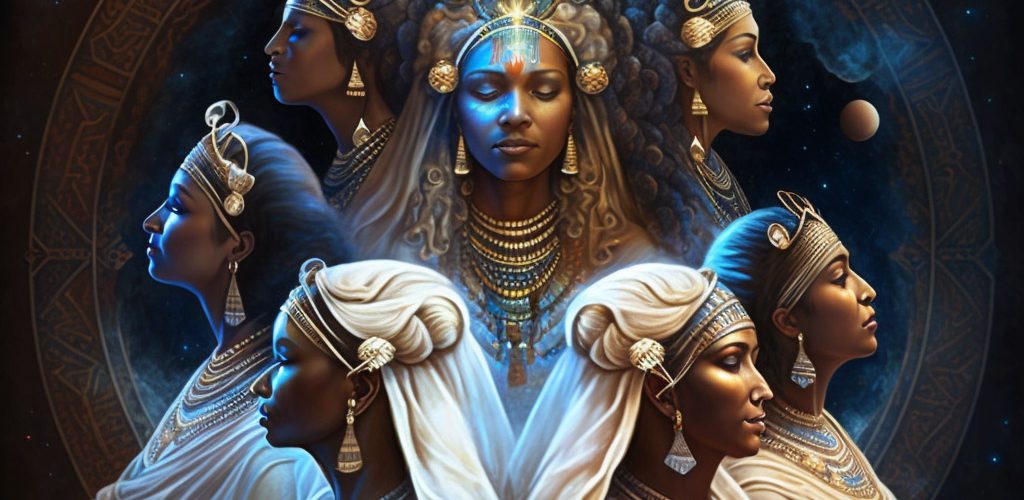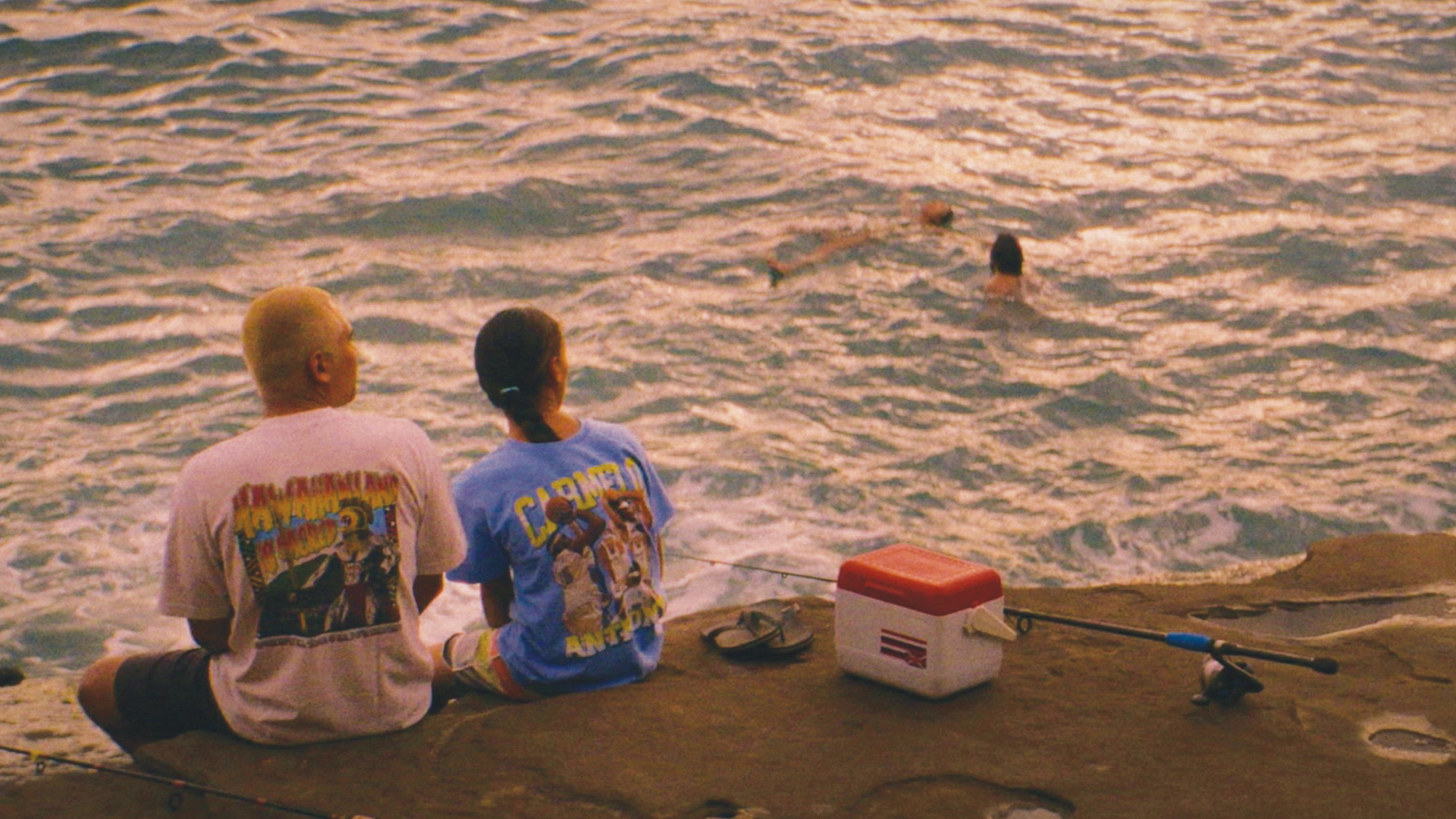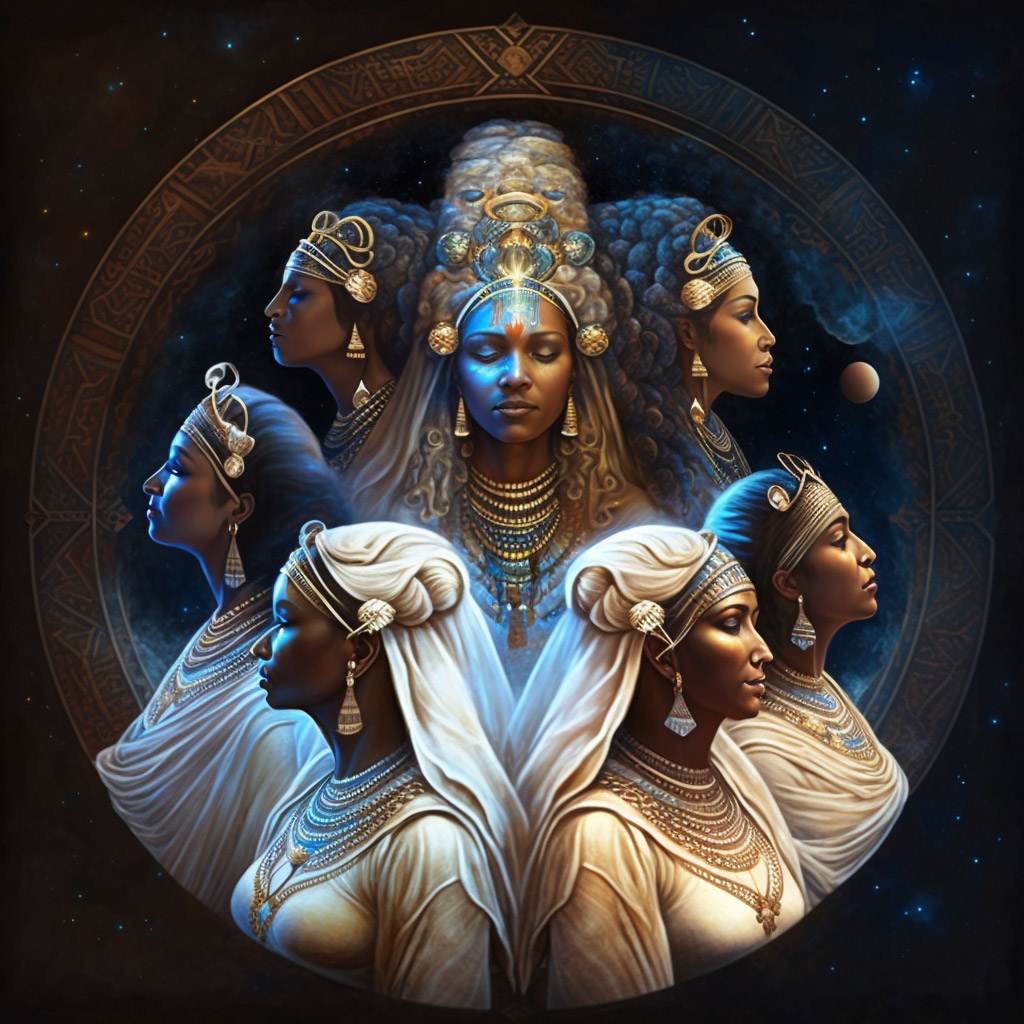
Seven Mothers of the Universe, rendered in Midjourney and representative of Alaya Dannu’s dreams
The Multiverse of the Dreaming Mind is a series of writings that will explore the art, science, and gifts of dreams.
uj
Learning to Dance in Dreams
As a three-year-old, Dannu ran around on the balls of her feet, prompting her mother to put her in ballet classes. From there, she proceeded to learn a variety of dance forms, including jazz and tap. Then, as a teenager, the dreamscape took her dance training to a deeper level.
Over a 15-year period of dreaming, Dannu was shown specific movements and taught to understand their philosophical foundations. Her ancestral mothers taught her a sacred narrative about the origins of movement and ways to embody movement through a dance ritual. When she performed the dance publicly in 2022 and 2023 at the International Association for the Study of Dreams Conference, audiences were mesmerized by the precision and beauty of her movements.
The first dream dance lesson took place when Dannu was 15.
“I called her Madame Asha in the dream, but it was one of my ancestral divinities,” Dannu explains. “She would just show me very basic footwork, but I would have to practice it. She would say, ‘Wear bells on your ankles, so I can hear you practice [when you’re awake].'”
The directive prompted Dannu to investigate which cultures incorporated bells in their dance traditions, and she discovered several African and Indian traditions that did. Because she was living in Queens at that time — the most ethnically diverse New York borough — she went to Jamaica Avenue and purchased some bells with her allowance.
Finally, in 2013, a dream revealed the specific cultural context of the dance Dannu was learning.
“I had a dream about Vishnu, and he stated, ‘Those who give praise to Padma Makara will receive great blessings.’ And I was like, ‘Who’s Padma Makara? I don’t know who that is,'” she recalls. “In the second dream, I was being addressed as Mahari. And I was like, ‘Do these words even exist?'”
Dannu decided to Google the names of the figures who emerged in her dreams, and soon learned that Mahari is the name of the sacred temple dancers in Orissa, India. There was also a mother-daughter dance tradition, known as the Mahari tradition.
“Dannu began researching the Odissi dance form, and her ancestral mothers eventually approved for her to seek a waking world teacher. As Dannu explains, they told her, “‘Now you can go out into the world and learn the basics… But we’ve taught you the essentials, we’ve taught you the origin story, we’ve taught you the nuances of movement, we’ve taught you the philosophy.'”
When Dannu went to take an in-person class, the teacher was so impressed by her skills, she didn’t believe it could possibly be her first class. Dannu recalls, “She said, ‘I’ve been teaching for fifteen years, and those are not beginner’s moves.'”


Water Temple (top) and Architects of Existence (bottom), rendered in Midjourney and representative of Alaya Dannu’s dreams
The Origins of the Dream Gift
Dannu’s uncommon relationship with dreaming was nourished from an early age. With “ancestry from all over the world,” Dannu’s mixed-race family normalized and encouraged discussion about nocturnal adventures.
After her great-great-grandmother passed away, Dannu started having dreams where the recently-transitioned ancestor gave her messages to relay to other family members. Recognizing Dannu’s gift, her family urged her to write down her dreams, around her 17th birthday, her aunt gave Dannu her first dream journal.
Dannu has been recording her dreams ever since and usually travels with some of her dream journals — an invaluable archive of trans-dimensional knowledge. On some past journeys through her ancestral homelands, she’s prioritized precious baggage space for the journals and has chosen to leave behind other items at the behest of the Transportation Security Administration (TSA), rather than part with these sacred texts.
Dannu defines dreams as “both a space and a process.” In one of her canonical dreams, dreaming was explained to her as “traveling through a transit hub out in the cosmos, heading towards a place to receive knowledge [and] information.”
“When we go to sleep,” she says, “our bodies are at rest, and our consciousness, or our spirits, travel to another realm.”
But Dannu doesn’t stop there. She shares what she witnesses.
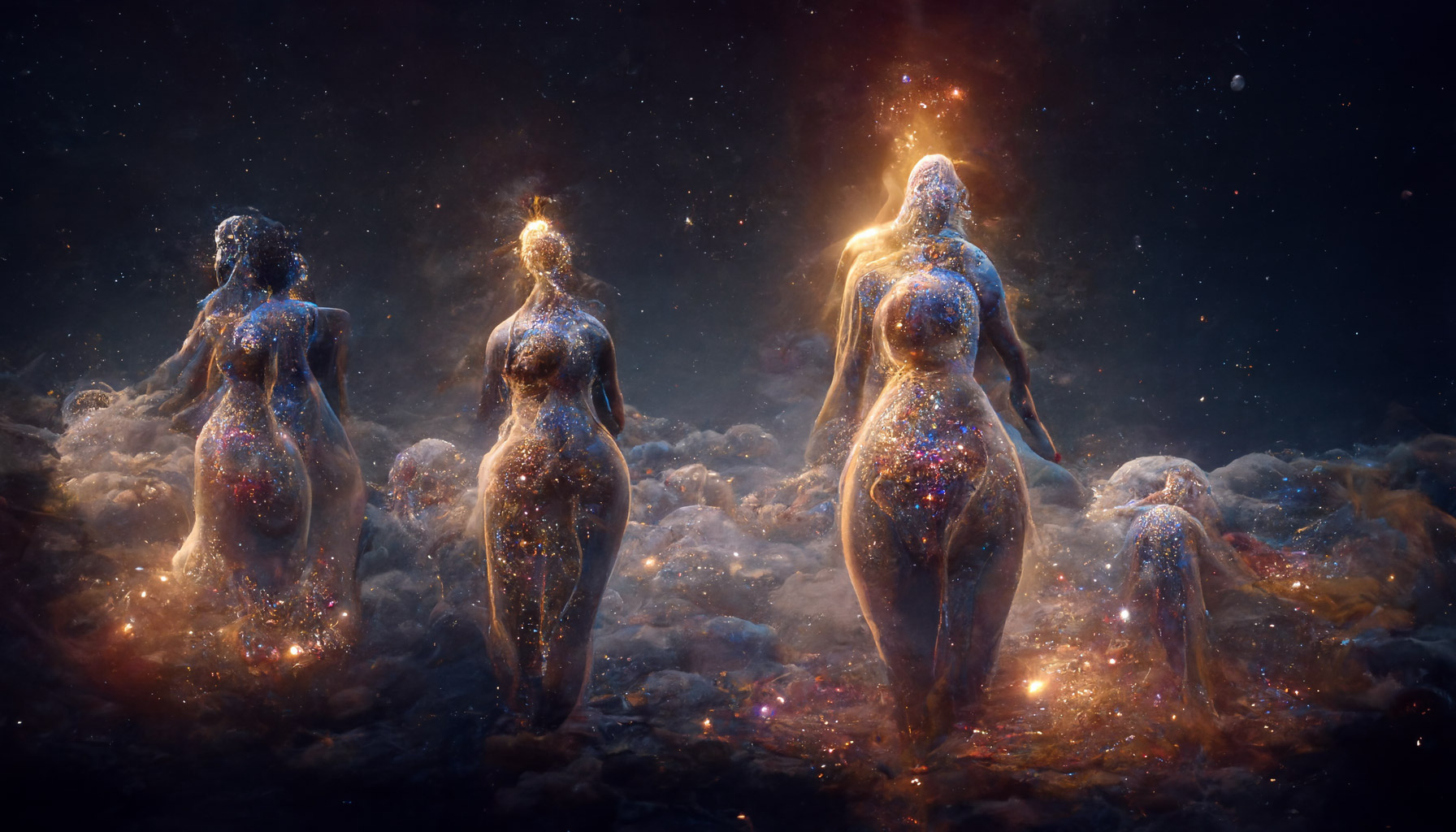

The Mothers Emerging (top) and Elders of the Night (bottom), rendered in Midjourney and representative of Alaya Dannu’s dreams
Cultural & Ancestral Dreaming
Much of Dannu’s focus is on what she describes as the effort “to bring awareness around cultural, traditional cultural aspects of [dream] training beyond Eurocentric research.”
“We don’t need to psychoanalyze everything,” she continues. “There are cultural traditions that have a way of seeing and understanding the dream and not necessarily interpreting the dream.”
Dannu’s mother firmly believed that listening to their foremothers’ teachings — as transmitted through dreams and intuitive insights — provided more nourishing narratives than many of the male-centric and colonial perspectives on spirituality that exist in the world today. She impressed upon her daughter the belief that “ancestral knowledge is more valuable than the narratives created by the current dominant worldview — in particular, the ones that exist in American society.”
Due to the overlap and similarities between her foremother’s teachings and that of Ifá — a spiritual and wisdom tradition originating in West Africa — Dannu explored different facets of Ifá. However, one of her ancestral mothers told her in a dream that, “Getting initiated in Ifá is not your path.”
Over the years, it became clear that Dannu needed to honor the legacy of her foremothers and develop her path in alignment with their guidance.
“There’s cultural memory — the reclamation of memory through more traditional practices,” Dannu explains. Her goal is to encourage others to take an interest in their dreams or embrace their own dreaming practices. Dannu believes everyone has access to an ancestral or cultural dreaming approach.
“Even if you feel you’re disconnected from your culture… reconnecting to your ancestry doesn’t necessarily mean becoming best buds with the worst of ancestors,” she explains. “It means understanding where they came from and what their practices were. How they related to the sacred; how they relate it to the spiritual realm, so that you can utilize those tools to understand how they’re communicating with you.”
Dannu’s ancestors usually communicate with her through direct transmission. She explains, “They’ll come down, they’ll speak, and then I have to remember it. Sometimes they won’t leave until I’ve gotten it; I’ve had to repeat back to them what they just transmitted, and then they would disappear.”

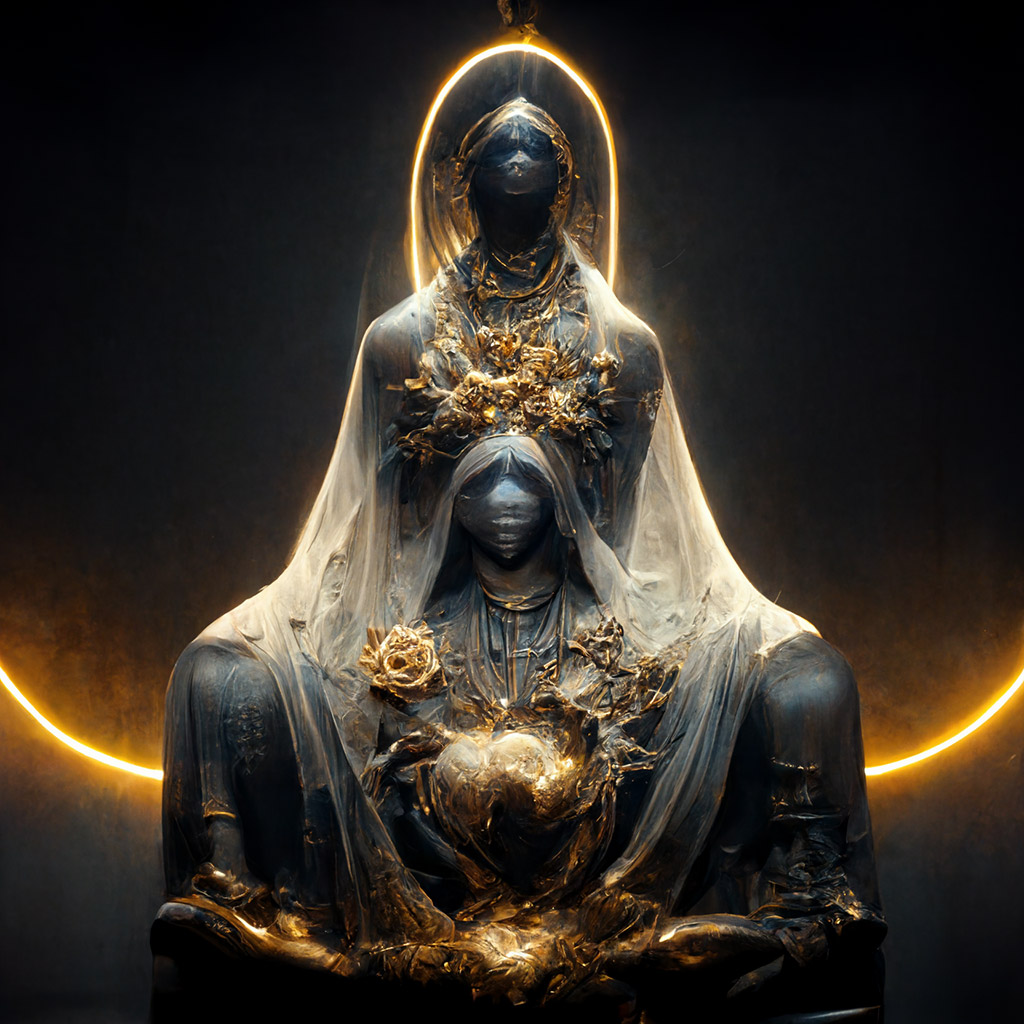
Fated Death (top) and Black Madonna Continuity (bottom), rendered in Midjourney and representative of Alaya Dannu’s dreams
Incorporating Artificial Intelligence into Dream Art
In 2022, Dannu was recovering from an outpatient surgical procedure and came across Midjourney, an generative artificial intelligence program which creates images from textual prompts.
She started feeding her dream reports into Midjourney to render the dream experiences into visual art. Studying language descriptions, she filled her arsenal with nuanced prompts to generate the most accurate imagery to reflect her dreams. Dannu credits her ancestral mothers with supporting this mode of expression, which she describes as a “three-way collaborative process between the mothers, the AI, and myself.”
Dannu has since developed an impressive portfolio of work. She hopes to someday present an exhibit that combines visual art, dance, and presentation that explores “utilizing modern technology to give shape and form to ancient traditions.”
“We don’t necessarily need to be limited to old ways of being creative,” she continues. “This is my way of giving form to the sacred.”
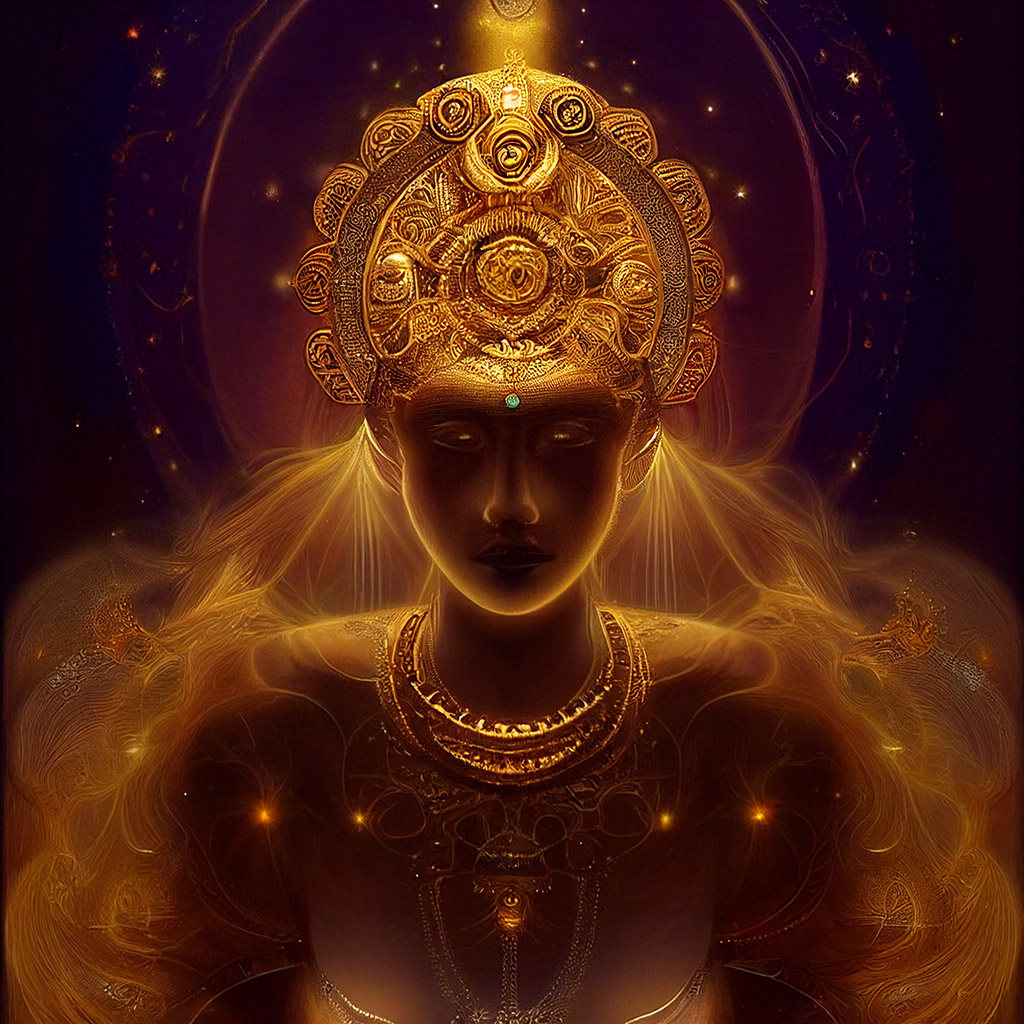
Divinity Codex, rendered in Midjourney and representative of Alaya Dannu’s dreams
Dreaming Beyond Boundaries
For people who want to start to uncover the gifts offered by dreams, Dannu has a few suggestions. First, she recommends documenting them.
“You have to develop that relationship with yourself,” she says. “You have to show that higher aspect of yourself that you want to be dedicated to this. And then your dreams start to shift; things will start to be revealed.”
Dannu also recommends branching out beyond the standard psychoanalytic approach to dream interpretation. She suggests, “Absolutely look into other cultural practices and interpretations and ways to interpret your dreams, because if you relegate it to just a Western approach, you’re gonna miss out on so much.”
Finding out more about one’s ancestry can be a place to start honing in on cultural dreamwork specific to one’s lineage. “How to find that alignment is, of course, digging into your ancestry and… how those cultures related to symbols…” she explains. “It’s hard. It has its challenges. But for me, it’s so worth it… because it’s restoring a lost culture and way of being.”
While she finishes her PhD, Dannu is already developing mini-courses on ancestral dreaming and other aspects of her research. She hopes to offer students tools to better understand their dreams and how to work with them. Prioritizing traditional or Indigenous dreaming practices in how she builds and lives her life has come with its challenges, however.
“You have to sacrifice a lot of what society has said is important to you. You have to get rid of a large part of your conditioning in order to really fully honor it,” she admits. “And it’s a struggle because some people are comfortable with what society has set up for them…”
“[But] I wouldn’t trade it for anything else in the world,” she continues. “Because this path — [which includes] cultural restoration through dreams, embodying and sharing dream knowledge, and dreamweaving — is very nourishing.”
Ω

